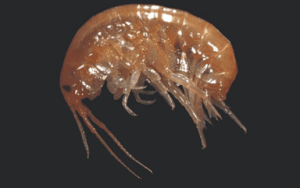ED’s FINDINGS ON PAYTM PAYMENTS BANK
TAG: GS 3: ECONOMY
THE CONTEXT: The Enforcement Directorate (ED) has concluded its inquiry into Paytm Payments Bank Limited (PPBL) transactions, stating that there were no violations under the Foreign Exchange Management Act (FEMA).
EXPLANATION:
- However, concerns related to Know Your Customer (KYC) compliance and other issues have been identified, prompting potential action by the Reserve Bank of India (RBI).
- On January 31, the RBI issued a circular prohibiting PPBL from accepting further deposits, top-ups, or conducting credit transactions into customer accounts, wallets, FASTags, and National Common Mobility Cards (NCMC) after February 29.
- The action was based on the Comprehensive System Audit report and compliance validation reports, indicating persistent non-compliance and supervisory concerns.
ED’s Investigation and Findings:
- FEMA Violation:
- The ED found no FEMA violations during its inquiry into PPBL transactions.
- PMLA Exclusion:
- As no scheduled offences under the Prevention of Money Laundering Act (PMLA) were identified, money laundering investigations were deemed unnecessary.
- KYC Compliance Concerns:
- The investigation focused on KYC compliance, revealing areas of concern related to user and merchant onboarding processes, document collection and authentication, anti-money laundering measures, merchant category code assignment, and National Payments Corporation of India’s regulatory compliance.
- Observations Submitted to RBI:
- ED findings, along with certain observations regarding other payment banks, third-party application providers, and payment aggregators, have been reported to the RBI for potential regulatory action.
Key Areas of Concern Identified:
- KYC Processes:
- Slackness in adherence to KYC norms, particularly in user and merchant onboarding.
- Anti-Money Laundering Measures:
- Lack of robust measures to prevent money laundering.
- Regulatory Compliance:
- Issues related to the assignment of merchant category codes and adherence to regulatory requirements by the National Payments Corporation of India.
- Ownership Identification:
- Inadequacies in processes for identifying ultimate beneficial ownership and politically exposed persons.
- Virtual Account KYC:
- Lack of KYC adherence related to the setup of virtual accounts.
- Monitoring and Reporting:
- Inefficient monitoring and periodic reporting of suspect transactions to authorized agencies.
Recommendations for Improvement:
- IT Audit Framework Adoption:
- The ED recommends the full-fledged adoption of the Information Technology audit framework as prescribed by relevant authorities.
- Mitigating Vulnerabilities:
- Addressing vulnerabilities, including the possible misuse of Application Programming Interfaces (API) keys and URL spoofing to prevent financial fraud.
Enforcement Directorate (ED):
- The Directorate of Enforcement is a multi-disciplinary organization mandated with an investigation of offenses of money laundering and violations of foreign exchange laws.
- The statutory functions of the Directorate include the enforcement of the following Acts:
- The Prevention of Money Laundering Act, 2002 (PMLA)
- The Fugitive Economic Offenders Act, 2018 (FEOA)
- The Foreign Exchange Management Act, 1999 (FEMA)
The Foreign Exchange Management Act, 1999 (FEMA):
- It is a civil law enacted to consolidate and amend the laws relating to facilitate external trade and payments and to and maintenance of foreign exchange market in India.
- ED has been given the responsibility to conduct investigation into suspected contraventions of foreign exchange laws and regulations.
The Prevention of Money Laundering Act, 2002 (PMLA):
- It is a criminal law enacted to prevent money laundering and to provide for confiscation of property derived from, or involved in, money-laundering.
- ED has been given the responsibility to enforce the provisions of the PMLA by conducting investigation to trace the assets derived from proceeds of crime.
Conclusion:
- While the ED found no FEMA violations in the case of PPBL, the identified concerns related to KYC compliance underscore the need for regulatory vigilance.
- The RBI is expected to take appropriate action based on the findings, emphasizing the importance of adherence to financial regulations and consumer protection in the digital payment sector.

